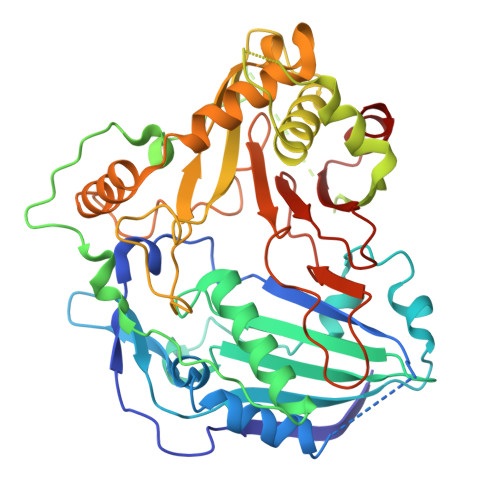Structural and dynamic basis of substrate permissiveness in hydroxycinnamoyltransferase (HCT).
Chiang, Y.C., Levsh, O., Lam, C.K., Weng, J.K., Wang, Y.(2018) PLoS Comput Biol 14: e1006511-e1006511
- PubMed: 30365487
- DOI: https://doi.org/10.1371/journal.pcbi.1006511
- Primary Citation of Related Structures:
6DD2 - PubMed Abstract:
Substrate permissiveness has long been regarded as the raw materials for the evolution of new enzymatic functions. In land plants, hydroxycinnamoyltransferase (HCT) is an essential enzyme of the phenylpropanoid metabolism. Although essential enzymes are normally associated with high substrate specificity, HCT can utilize a variety of non-native substrates. To examine the structural and dynamic basis of substrate permissiveness in this enzyme, we report the crystal structure of HCT from Selaginella moellendorffii and molecular dynamics (MD) simulations performed on five orthologous HCTs from several major lineages of land plants. Through altogether 17-μs MD simulations, we demonstrate the prevalent swing motion of an arginine handle on a submicrosecond timescale across all five HCTs, which plays a key role in native substrate recognition by these intrinsically promiscuous enzymes. Our simulations further reveal how a non-native substrate of HCT engages a binding site different from that of the native substrate and diffuses to reach the catalytic center and its co-substrate. By numerically solving the Smoluchowski equation, we show that the presence of such an alternative binding site, even when it is distant from the catalytic center, always increases the reaction rate of a given substrate. However, this increase is only significant for enzyme-substrate reactions heavily influenced by diffusion. In these cases, binding non-native substrates 'off-center' provides an effective rationale to develop substrate permissiveness while maintaining the native functions of promiscuous enzymes.
Organizational Affiliation:
Department of Physics, The Chinese University of Hong Kong, Shatin, Hong Kong.














